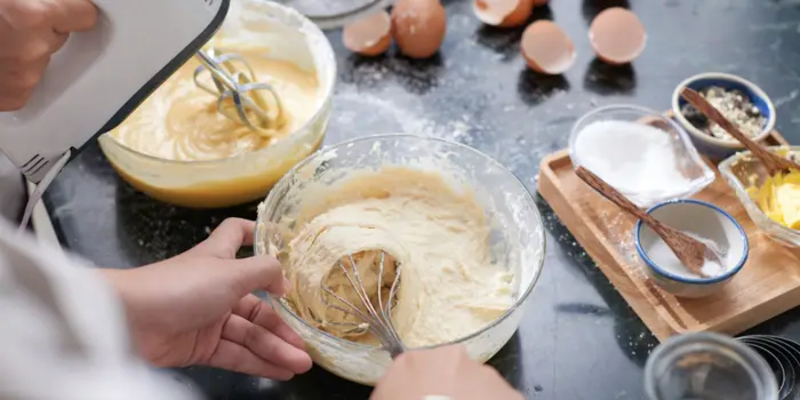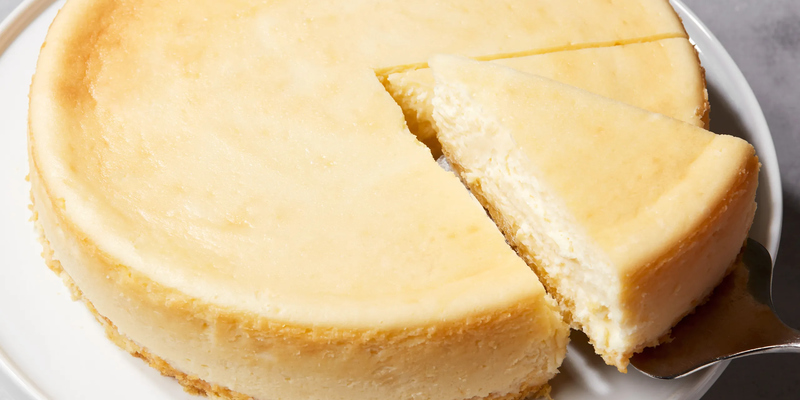7 Proven Techniques to Prevent Cheesecake Cracks for a Smooth Finish
Are you a cheesecake lover who loves to bake them? But sometimes, when you bake them, cracks appear on top. These cracks can ruin the look of cheesecake. After your hard work, when something comes out so bad, you will be so disappointed.
Your cheesecake does not just crack and look bad. It also becomes dry and tasteless. No worries! We are here to guide you.
In this post, we will share seven useful tips you can use to prevent these cracks on your cheesecake. With every tip you follow, your cheesecake will become perfect in taste and texture.
So let's get started!
Why Does a Smooth Finish Matters for Cheesecakes?

A flawless cheesecake isn't just eye candy. That smooth top tells you a lot about what's inside. It's a sign of a job well done in the kitchen.
Cracks often mean trouble. They can indicate overbaking or cooling gone wrong. These issues don't just affect looks, they can also mess with the texture.
Nobody wants a dry, crumbly slice. A crack-free cheesecake usually means you've nailed the baking process. It promises a creamy, melt-in-your-mouth experience.
Think about serving your guests. A perfect-looking cheesecake builds excitement. It shows you care about both taste and presentation.
Mastering a smooth finish isn't just about pride (though that's nice too). It's about creating the best possible dessert. You know you're in for a treat when you cut into a crack-free cheesecake.
7 Proven Techniques to Prevent Cheesecake Cracks
You now know the seven techniques for making silken, velvety cake. Let's discuss them one by one.
1. Use Room Temperature Ingredients
This step is very important to achieve a smooth batter. Cold cream cheese is particularly difficult to work with because it remains lumpy and often cracks later.
For the best results, it is recommended that your ingredients be at room temperature, especially the cream cheese, eggs, and any dairy, at least one hour before whipping.
Cold-weather ingredients mix well, so an overmix is unnecessary to get a smooth batter. This smooth start is the preparation that leads to a crack-free end. If you need to warm the cream cheese quickly, chop it into cubes.
2. Avoid Over Mixing the Batter
Don't overmix your batter. Overmixing the batter incorporates too much air, which causes a cheesecake to develop cracks. When baked, the cake rises like a souffle, only to deflate and develop an uneven surface upon cooling.
In a large bowl, combine the cheesecake ingredients, excluding the eggs, and blend until creamy, lump-free, and smooth. When adding the eggs, combine them with the other ingredients minimally.
Eggs retain air; therefore, adding a small amount of this effectively avoids cracks at this stage. A few streaks of egg in the batter are preferable to a batter that has become overmixed.
3. Incorporation: Utilize a Water Bath (Bain-Marie)
A water bath is your secret weapon to have that perfectly baked cheesecake. It gives a moist heat, which bakes the cake slowly and uniformly. Here's how to do it:
- Cover the bottom and sides of your springform pan with two to three layers of heavy-duty aluminum foil. This will prevent water from seeping in.
- Put the coated pan in another larger roasting pan.
- To prepare the cheesecake, pour the cheesecake batter into the springform pan.
- Position the whole setup in the oven and carefully spoon hot water into the roasting pan, about half an inch to two inches deep.
The water bath effectively helps to lift the cheesecake with the help of steam from water and will not crack. It also assists in preventing the cheesecake from sinking as it cools to room temperature.
4. Bake at a Low Temperature
When it comes to cheesecakes, slow and steady wins the race. High heat can cause the eggs to puff up quickly and deflate, leading to cracks. Instead, bake your cheesecake at a lower temperature, around 325F (165C).
This gentle heat allows the cheesecake to cook evenly from the edges to the center. It might take longer, but the smooth result is worth the wait. Remember, patience is a virtue in cheesecake baking!
5. Don't Overbake
One of the most common causes of cracks is overbaking. When gently shaking the pan, a perfectly baked cheesecake should still have a slight wobble in the center. It might look underdone, but it will continue to set as it cools.
The edges should be slightly puffed and fairly firm, but the inner circle should jiggle like it barely sets Jello. If you see any small cracks forming, it's time to start the cooling process.
Trust that the residual heat will finish without drying out your cheesecake.
6. Gradual Cooling

Cheesecakes are also delicate, and they are very much affected by changes in temperature. Fast cooling also makes the cake shrink and crack, probably due to the high shrinkage rate within a short period. Instead, cool your cheesecake gradually:
- Finally, when the baking is done, switch off the oven and open the door a bit.
- After baking, let the cheesecake stand in the oven for one hour to cool gradually.
- After one hour, remove it from the oven and allow it to cool on a rack at the normal temperature.
- After that, refrigerate for at least 4 hours or best served for the next day.
This slow cooling process helps to avoid cracks and gives the top of the cake a glass-like finish.
7. Sweep the Knife Along the Rim
As soon as you take your cheesecake out of the oven, use a thin-serrated knife or an offset spatula to loosen it around the Rim of the pan. This step helps prevent the cake from sticking to the sides of the pan as it cools and shrinks.
If the cheesecake is stuck to the pan, the center pulls and cracks as it settles into place. When you release the edges, the whole cake shrinks uniformly. Avoid harsh actions on the artwork, as this may spoil the masterpiece.
Achieve Perfect, Crack-Free Cheesecakes
You've just learned that you should set yourself up perfectly for any recipe. As with anything, the more you try, the better you will become, so do not despair if the first few attempts are not as flawless as the ones seen on television.
Every cheesecake you prepare will be a new lesson. Sooner or later, you will produce perfect, smooth cakes free from cracks, similar to a professional.
Don't wait any longer. Get your oven on, get your springform pan ready, and get baking! Your friends and family are going to enjoy the hell out of this. Who knows? You might just be the cheesecake lover in your group of friends.
Happy baking!
Frequently Asked Questions
Q: Why is a water bath important for baking cheesecake?
Ans: A water bath creates a moist environment in the oven. This gentle, even heat helps your cheesecake bake smoothly from edge to center, preventing cracks and ensuring a creamy texture.
Q: Can I use cold ingredients in cheesecake?
Ans: Avoid cold ingredients. Room-temperature cream cheese, eggs, and dairy blend more easily, creating a smooth batter without overmixing. This reduces the risk of lumps and cracks in your finished cheesecake.
Q: What temperature should I bake my cheesecake?
Ans: Aim for a low oven temperature, around 325F (165C). This gentle heat allows the cheesecake to cook slowly and evenly, reducing the chance of cracks forming on the surface.
Q: How do I know if my cheesecake is done baking?
Ans: A perfectly baked cheesecake should still have a slight wobble in the center, like barely set Jello. The edges will be more set and slightly puffed. It will continue to firm up as it cools.